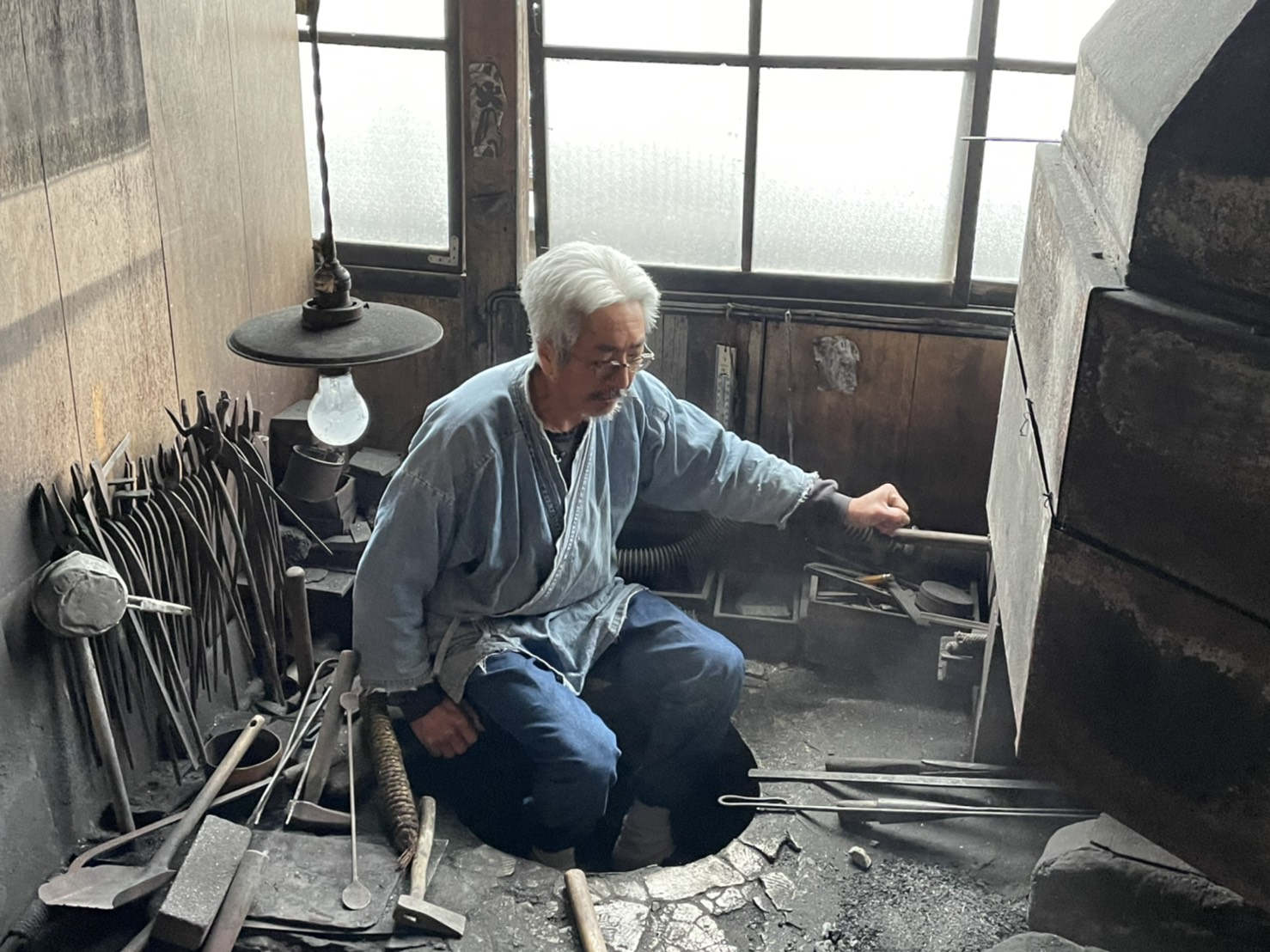Oct 28, 2021
Get to the Point – Traditional Japanese Swordsmithery Near Nagoya
According to historian and author Stephen Turnbull on the Netflix documentary The Age of Samurai, “the samurai’s most iconic weapon was the katana, the Japanese sword, widely regarded as the finest sword ever made in world history. It had a very sharp resilient blade, which was curved, and it enabled a samurai to deliver a devastating stroke.”
For samurai, the katana – and other bladed weapons such as the tachi, tanto, and wakizashi – was such an essential part of life that they were required to wear them at all times as a signal of their status. But it was more than just a weapon for battle; it also provided spiritual protection. Having a sword on display in your home was comparable to putting a crucifix on your wall; it warded against evil spirits, signified your belief, and it was a symbol of your strength.

However, the samurai class was outlawed in the 1870s following the Meiji restoration. Today Japan is such a nation of peace that a direct descendent of one of Japan’s greatest ever warlords, Oda Nobunaga, is world champion figure skater Oda Nobunari (though it is interesting that both achieved success due to their proficiency with blades). Yet, the Japanese sword retains its place in Japanese culture as a work of art, revered for its craftsmanship and elegance.
A dying artform
Unfortunately, the making of Japanese swords is a dying practice. Part of the problem is the cost inherent in making, and thus buying, a new katana. The starting price of a blade made by a top swordsmith is 5 million JPY. Buying a naked blade from a regular smith will set you back between 1.2 million and 1.7 million JPY. Yet these are works of art, and if a shredded Banksy can be worth nearly 3 billion JPY, surely these historical monuments could maintain a market, right?
Disappointingly, no, the market in Japan is not strong. Younger people are losing interest in history, and it is a niche interest even for older people. Plus, having a sword in your home is akin to owning a gun in that the rules and regulations are myriad and difficult to navigate.
Further adding to the industry’s demise is the proliferation of imitation swords coming from China, from where you can get a sword advertised as a ‘katana’ for 20,000 JPY, and it is perhaps understandable that people buy these rather than the more expensive Japanese ve. Still, these purchases are not the real thing.

Swordsmiths at work
An authentic Japanese sword can take five people to make. It is an ancient process that goes back centuries, with the smith and four beaters, two to hammer the blade, replaced by another two when they tire. Then you have the people who make the hilt, the scabbard, the handle; the same care is not taken with a cheap imitation.
See a smith in action
However, some are doing their best to keep the industry alive, and one such artisan is Shinsuke Owaku, who goes by his official forge name Ono Kanemasa. (In Japanese history, it was not unusual to change names through life: you had the name you were born with, the name you took upon maturity, and sometimes the name you were given by your lord. Likewise, Shinsuke had his new name bestowed upon him by his master.)
Shinsuke had always been desperate to become a smith, and as a young man, he contacted a well-known smith in the hope of becoming his apprentice. Five times he was turned down, but due to his tenacity, eventually, the master relented and accepted him. After that, Shinsuke lived with his master for five years, the prerequisite for an apprentice wanting to learn the trade, and in time he became a master himself.
Today his forge in Seki, Gifu, an area famed for its blade production, is going strong. If you are interested in seeing him in action – and perhaps making a purchase – he is only too happy to oblige, and you can contact him through his website below.
Where: 418-4 Kamioono, Seki-shi, Gifu (map)
Website: thekatana.jp
Other ways to get involved in katana
Are you interested in katana, but aren’t ready to make a purchase? Perhaps you are wondering how you can get involved. Well, JIS asked local katana aficionado Chris Leeber for his tips.

Swordsmith Shinsuke Owaku and katana fan Chris Leeber
“As people who love Japanese culture, we can help out and get involved. Of course, the best thing to do would be to contact a swordsmith and commission a blade, but not everyone has that kind of money,” says Chris. “So, we can foster an interest, read up on it – Katana Connoisseur by Kokan Nagayama is a great start – and discover what kind of swords we like.
“Also, sword-based martial arts are a great way to develop our knowledge and understanding; kendo is fantastic as it doesn’t cost too much, and then there is iaido, which is all about the control of swords in self-defense.”
You can also email Chris at bladesofjapan@gmail.com or check out his website sbg-sword-store.sword-buyers-guide.com/blades-of-japan
All images by Chris Leeber


About the author